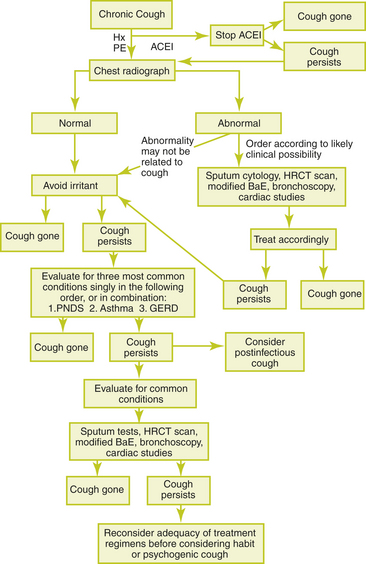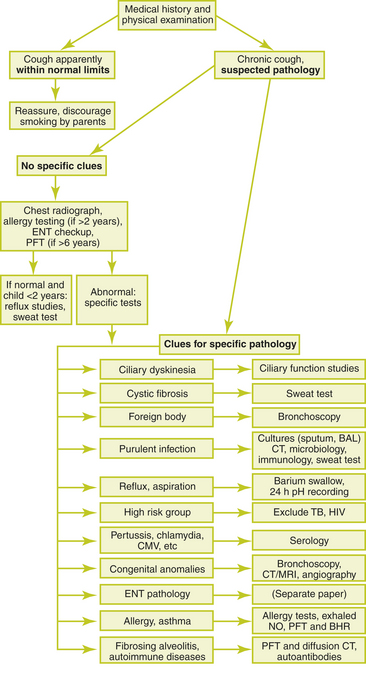Chapter 10 CHRONIC COUGH
General Discussion
The 1998 American College of Chest Physicians guidelines advocate that “the approach to managing chronic cough in children is similar to the approach in adults.” However, a subsequent study found that protracted bacterial bronchitis was the most common diagnosis in children, in contrast to adults, in whom asthma, postnasal drip syndrome, and GERD are the most common diagnoses. In fact, these adult diagnoses were found to be relatively uncommon in children. Because some controversy exists regarding the best algorithmic approach to the child with chronic cough, we provide two algorithms (Figures 10-1 and 10-2). The history and physical examination should provide significant guidance when using these algorithms. At some points in the algorithms, an empiric trial of therapy may be considered before additional testing is performed.

Figure 10-1 Sequential approach to the evaluation of chronic cough in the immunocompetent adult.
(From Irwin RS, et al. Managing cough as a defense mechanism and as a symptom: a consensus panel report of the American College of Chest Physicians. Chest 1998;114(2 suppl managing):166S

Figure 10-2 Diagnostic algorithm for use in children with chronic cough.
(From de Jongste JC, Shields MD. Chronic cough in children. Thorax 2003;58:998–1003, with permission.)
1. Neonatal onset of the cough, which may represent a congenital defect, a problem with ciliary function (such as cystic fibrosis or primary cilial abnormality), an anatomic lesion in the airways, or a chronic viral pneumonia acquired in utero or during the perinatal period
2. Chronic moist or purulent cough
3. Cough that began and persisted after a choking episode, which may be the result of foreign body aspiration
4. Cough that occurs during or after feeding, which suggests gastroesophageal reflux or aspiration during feeding



